Paradise, California Burned to the Ground. One Year Later, We Went Back.
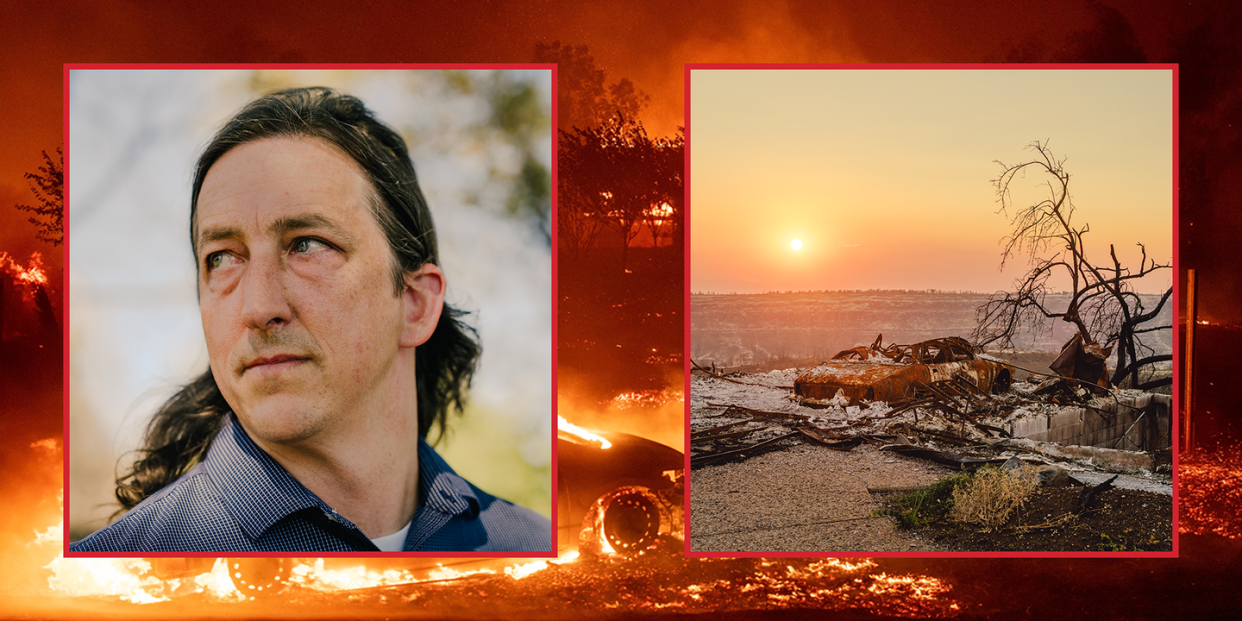
AROUND 8:30 ON the morning of November 8, 2018, psychiatrist Kirk Meekins was halfway through his first session of the day, with a patient who was struggling with depression and anxiety at the Feather River Health Clinic in Paradise, California. Through his window, Dr. Meekins saw a smoke cloud building on the horizon.
A knock interrupted them. They had to leave, now.
Two hours earlier, a downed power line had sparked a fire seven miles northeast of Paradise and a steady wind had jammed the flames toward the town.
People here in the foothills of the Sierra Nevada mountains live with the threat of wildfire. A decade earlier, a fire had slammed into the area, destroying 74 homes. In July 2018, a fire had ripped across 357 square miles near Redding that forced people to evacuate an hour south to Paradise. Few imagined a whole community could ever burn. Still, Dr. Meekins grabbed his things and left.
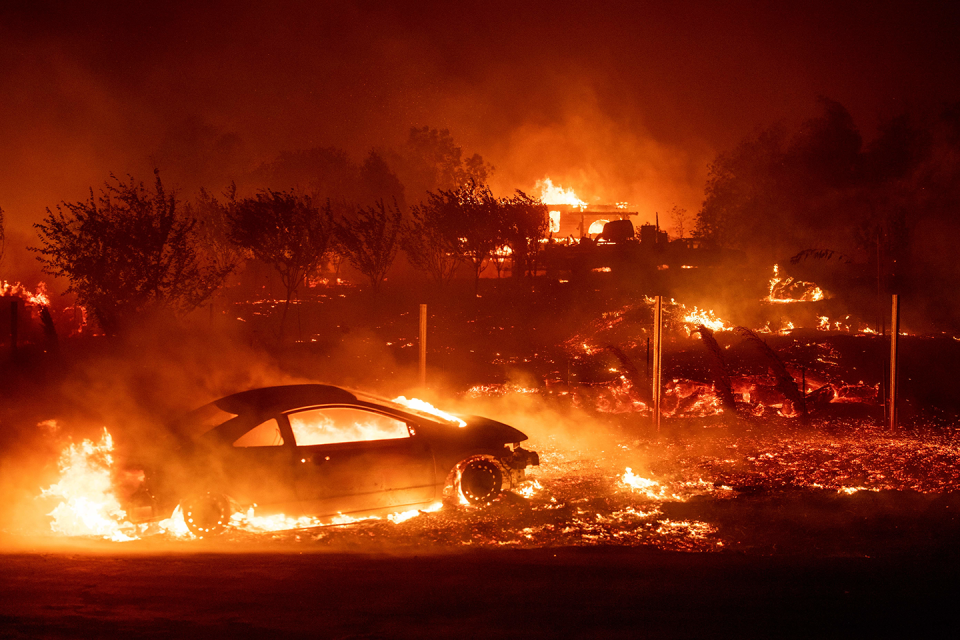
The inferno would kill at least 86 people, many in their houses and some in their cars as they fled on traffic-clogged roads. It nearly erased the town of 27,000, destroying more than 13,000 homes and scores of businesses. When I visited Paradise this past spring, flowers had burst through the ground, but the houses they once adorned were gone. Chimneys stood like memorial pillars. A metal staircase climbed to the second floor of nothing. A white picket fence hemmed in a green lawn and the empty footprint of a house. Behind another incinerated home, patio furniture with soft, inviting cushions circled around a fire pit waited for guests.
Cars burned to their axles littered the streets: pickup trucks and vans, economy hatchbacks and the fanciest sports cars, all hollowed out and rusty. Several schools burned, and Paradise’s only hospital was badly damaged. The town was a quilt of dumb luck and tragedy, depending on where the wind had pushed the flames and embers. Here and there, a house survived, about one for every ten that burned. Family photos still on the walls. Cupboards stocked with food. But mostly it was rubble, and gut-punched residents found little to save.
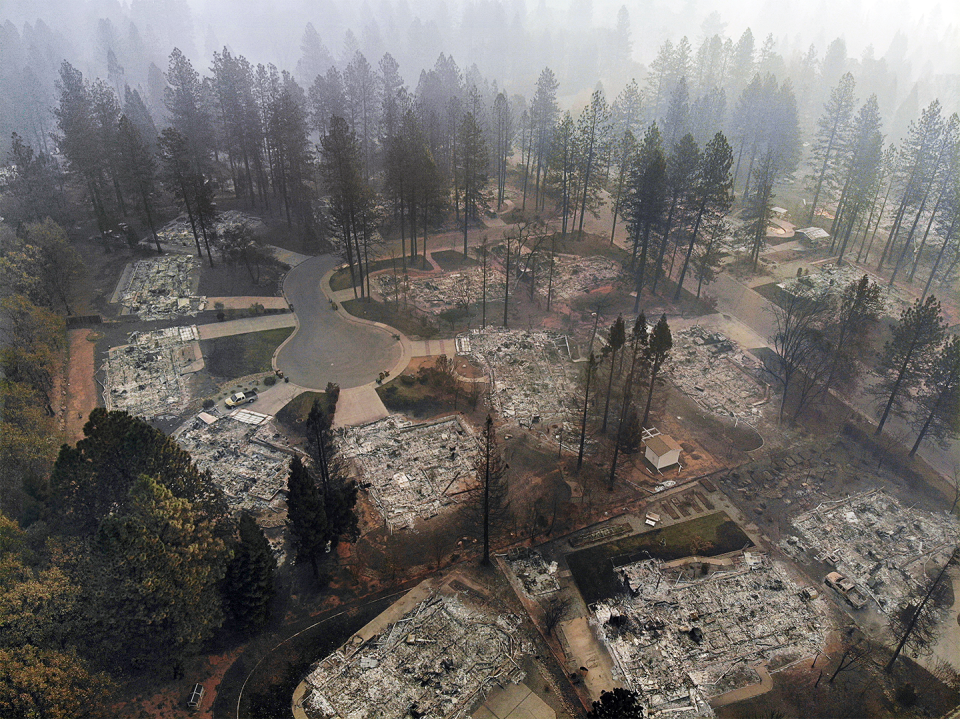
Dr. Meekins, 43, had been through a few hurricanes, having worked in New Orleans and Charleston, but he had seen nothing like this devastation, which went far beyond real estate. Paradise was considered underserved before the fire, with too few mental-health-care resources to treat the regular mix of life’s troubles—addiction and behavior issues, traumas and mood disorders. Since the fire, the needs have ballooned as people have tried to put their lives back together.
They have had to find new jobs, new schools, new neighbors. New homes and cars and clothes and everything else. But there’s more. Underlying all of that grief and frustration is the searing trauma from a day when many in Paradise thought they would die. Dr. Meekins’s clinic is at capacity, with a list of those waiting for an opening.
“There are so many layers and so much complexity to this trauma that it’s really hard for people to process and extremely difficult to move forward,” Dr. Meekins says. He has a quiet voice and a mellowness that patients must find reassuring, and dark brown hair, showing the first flecks of gray, that hangs past his shoulders. “So much of their lives are dominated, every minute of every day, by the fire and the tragedy and the ongoing day-to-day concerns.” His job, as he sees it, is to help people not just with this day but also with the next day, and the one after that.
Some people can’t bear to drive back into town, one giant emotional trigger. For others, smelling smoke or being caught in regular rush-hour traffic, even miles or states away from Paradise, can incite panic and flashbacks.
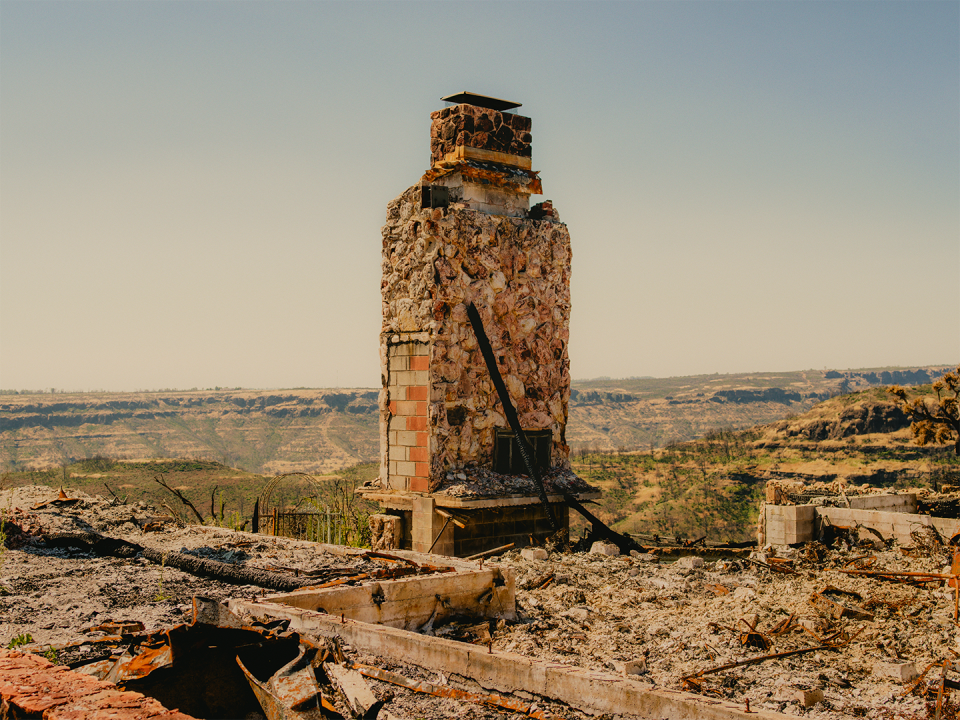
Imagine the Vietnam veteran living here who thought he’d found peace years ago, until the war crashed back into his life with the firefighting helicopter pounding over his neighborhood. Or the young mother whose mind keeps returning to those frantic hours. Trapped in her car, like so many others, she waited for what seemed like certain death. She waited and she wrestled with a horrible, sickening choice: Should she smother her child now and forgo the terror and pain of burning to death?
Natural disaster, like war, can introduce immediate suffering on an overwhelming scale. If your house burns down, your neighbors rally around you. But when all of their houses burn down too, life gets much more desperate. How do individuals rebuild psychologically—and how does a town rebuild collectively? When people return—and how—will determine what this community will be, whether it will be stronger and less vulnerable, or whether the shock of the calamity that roared into their lives was just too much.
There are many places like Paradise, waiting to burn, or be drowned by hurricanes or swept away by tornadoes, in large-scale disasters and individual tragedies wrought by climate change. How will we come back when life lays us flat?

IN THE WAITING room of the behavioral-health suite at the Feather River clinic, a woman with a soft face and tired eyes asks me if I’ve seen video of the fire and the escape. She digs out her phone and shows me a hellscape. Midnight-black sky, lit by walls of leaping lame. The world ablaze. Trees, homes, cars. Fire slithers across the road, and book-sized embers smack the car.
Her story tumbles out, her voice low and flat. “The worst part was the propane tanks,” she says. “They sounded like bombs going off.” That’s how she found out about the fire. Too loud for thunder, she thought. She looked outside and saw the neighbor’s house in flames. She grabbed her purse but forgot her cell phone, so for hours she wouldn’t know that her kids and grandkids had made it out of town safely. Her husband tried to ride his motorcycle, but the heat was just too much. He left it to melt into the asphalt and jumped into her car, where they soon felt they were baking alive. “We thought we were going to die,” she says. “So now I’m here in therapy.” Everyone has a story like that. Totally different and just the same.
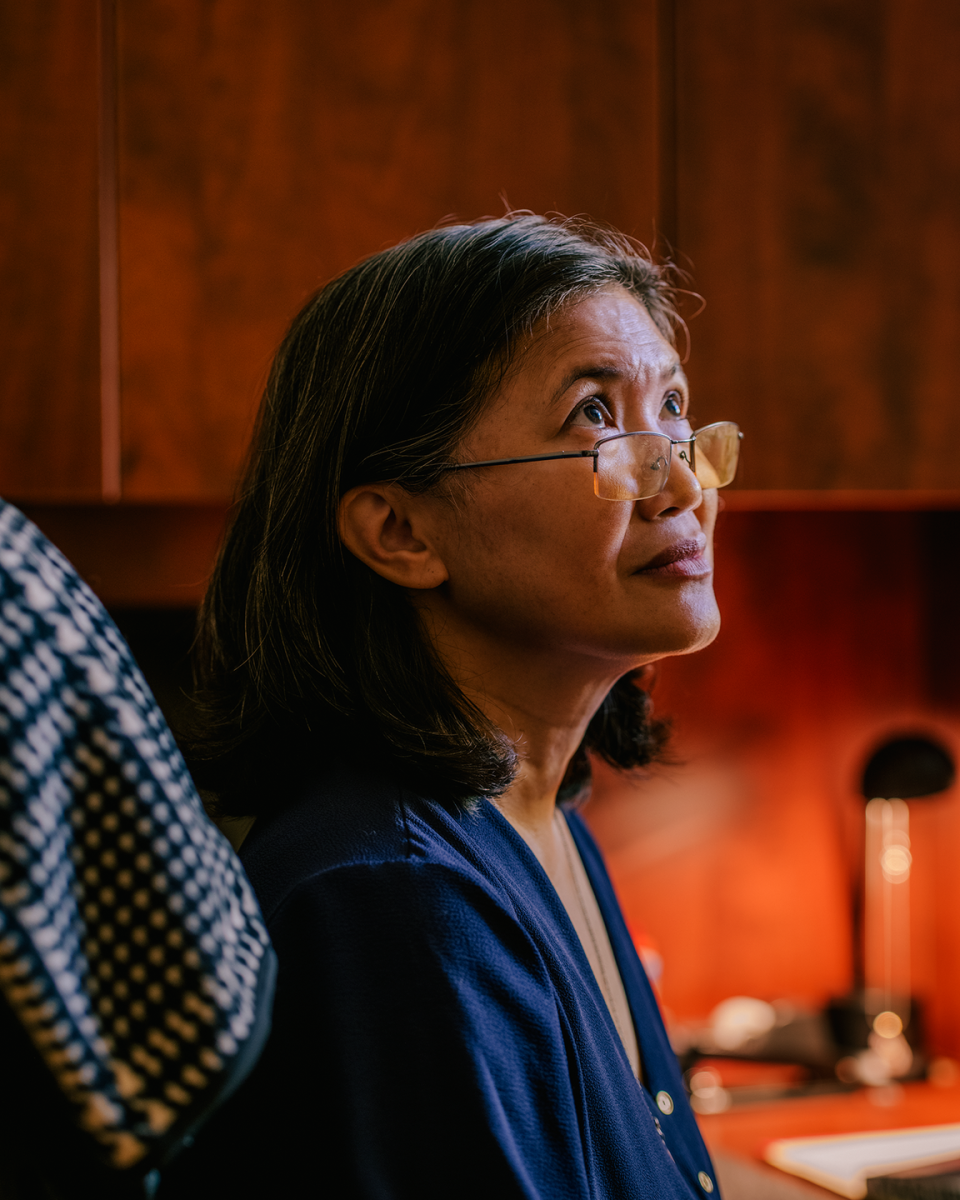
Wrestling with a near-death experience is plenty to generate an overload of psychological turmoil, but then there’s everything that comes afterward, too. “You have coping skills, but when it keeps piling on, it really wears people down,” Barbra Maguire tells me in her office at the Feather River clinic.
She knows this from both sides. Dr. Meekins lives 12 miles away in Chico, which gave him the emotional buffer of not losing his home. But Maguire’s life is woven into Paradise. She moved to town 30 years ago, met her husband here, and started a family. She’s a psychiatric nurse practitioner at the clinic now, and on the morning of the fire, she walked outside the building and watched white flakes of ash flutter down. It looked like snow. “All the birds were flying away in flocks,” she says. “It was like the apocalypse.” She raced home and woke up her three girls, collected their three dogs, and left. They returned to rubble.
In addition to what clinics like Feather River were doing, thousands of volunteers and crisis workers descended on the Paradise area after the fire and helped survivors navigate the chaos, finding them shelter, food, and clothes. Counselors from the American Red Cross and other organizations stationed themselves at several temporary shelters, where residents grappled with the devastation that had upended their lives. And then many of the groups left and outside attention waned. “It’s no different than having a death in the family,” Maguire says. “Everyone comes to help you until the funeral, and once the funeral is over, they leave and you’re by yourself. That’s when you realize your loss, but then you have no resources because they left you. It’s the same, just on a big, massive scale.”
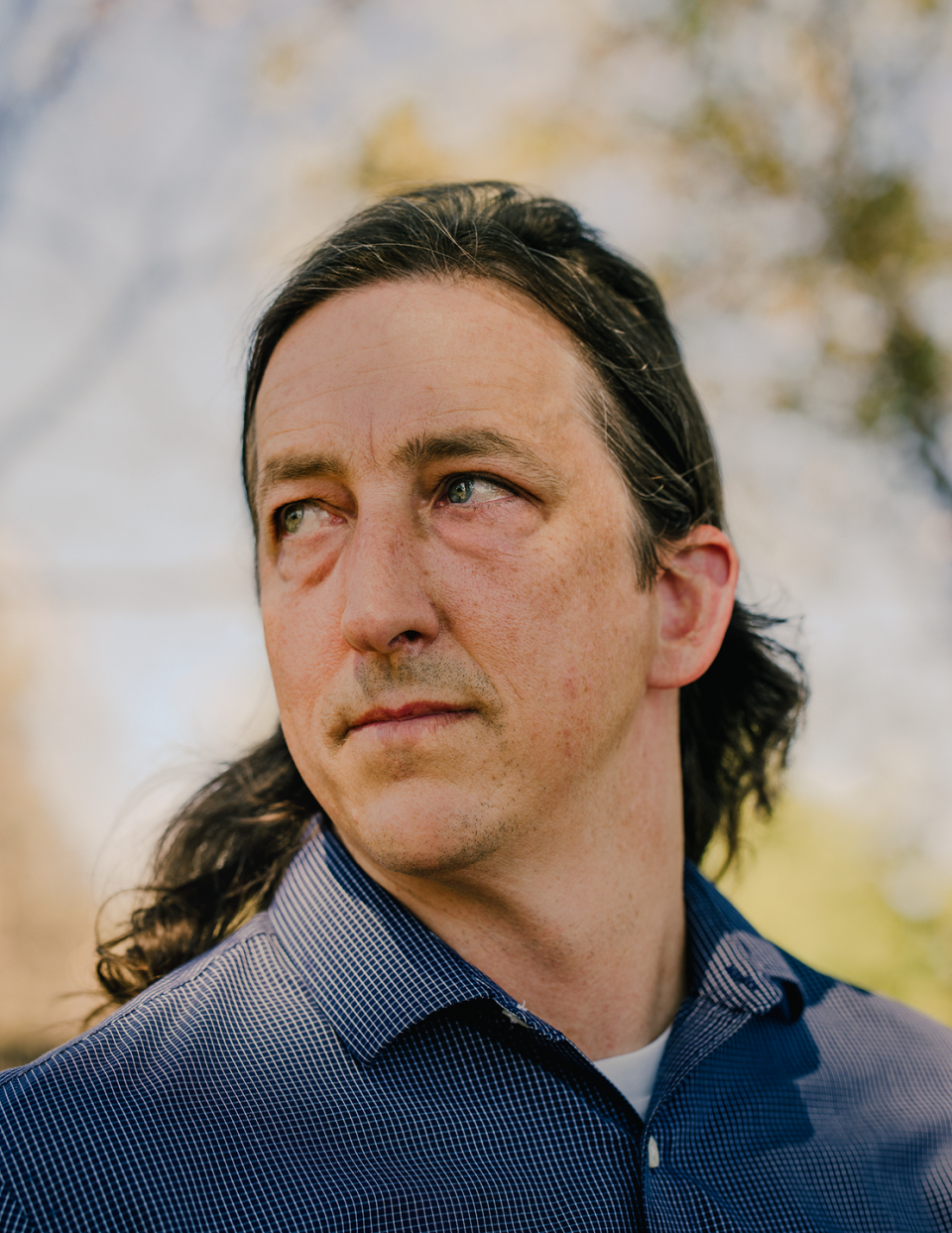
Some survivors are only finding out now how deeply the fire affected them, says Darla Gale, executive director of Heartstrings Counseling, which offers free counseling sessions for fire survivors. This can be particularly true for men. “They will just keep busy, busy, busy. They think that’s helping them, but they’re avoiding processing what they went through. It’s still there,” she says. “The opposite end of that, they’re stuffing it down, trying not to think about it, and that’s equally as bad.”
Most of the 500 people Heartstrings has helped had never sought mental-health care before the fire, but they reached a point at which the emotional distress overwhelmed them. “A key part of their recovery, and being stronger afterward,” Gale says, is a shifting of self-perception—moving from “victim to survivor to thriver. They incorporate everything they’ve been through, and they create a new story.” A story in which they have the strength to push on and make a good life for themselves, in spite of all they have lost.

THE FIRE SCATTERED residents to hotels, rental apartments, campgrounds, and FEMA trailer parks across California. Some knew early on that they’d never return. They moved on for work, or to give their kids stability, or to put the trauma behind them. Thousands more are waiting to see how quickly Paradise recovers, and when they’ll be able to go home. Or if they’ll want to.
Just up the road in Magalia, an adjacent town that lost roughly half its homes, the Magalia Community Church hosts a fire-recovery center with three big tents for meals, clothing donations, and household items. Some days the center was helping more than 300 people, and by the summer the needs were only growing. There are still about 25 people living in pop-up campers, fifth-wheels, and truck caps in the parking lot—families with nowhere else to go.
The pastor, Kevin Lindstrom, opened a youth center in the old firehouse next door to give displaced kids a little fun and a place to get away. Both domestic violence and child abuse can spike in the months after disasters, as survivors deal with the stress of reclaiming their lives. He’s already heard of divorces and separations. “The adrenaline is gone, and reality is setting in,” Lindstrom says. “The situation they’re in is not going to get better anytime soon.”
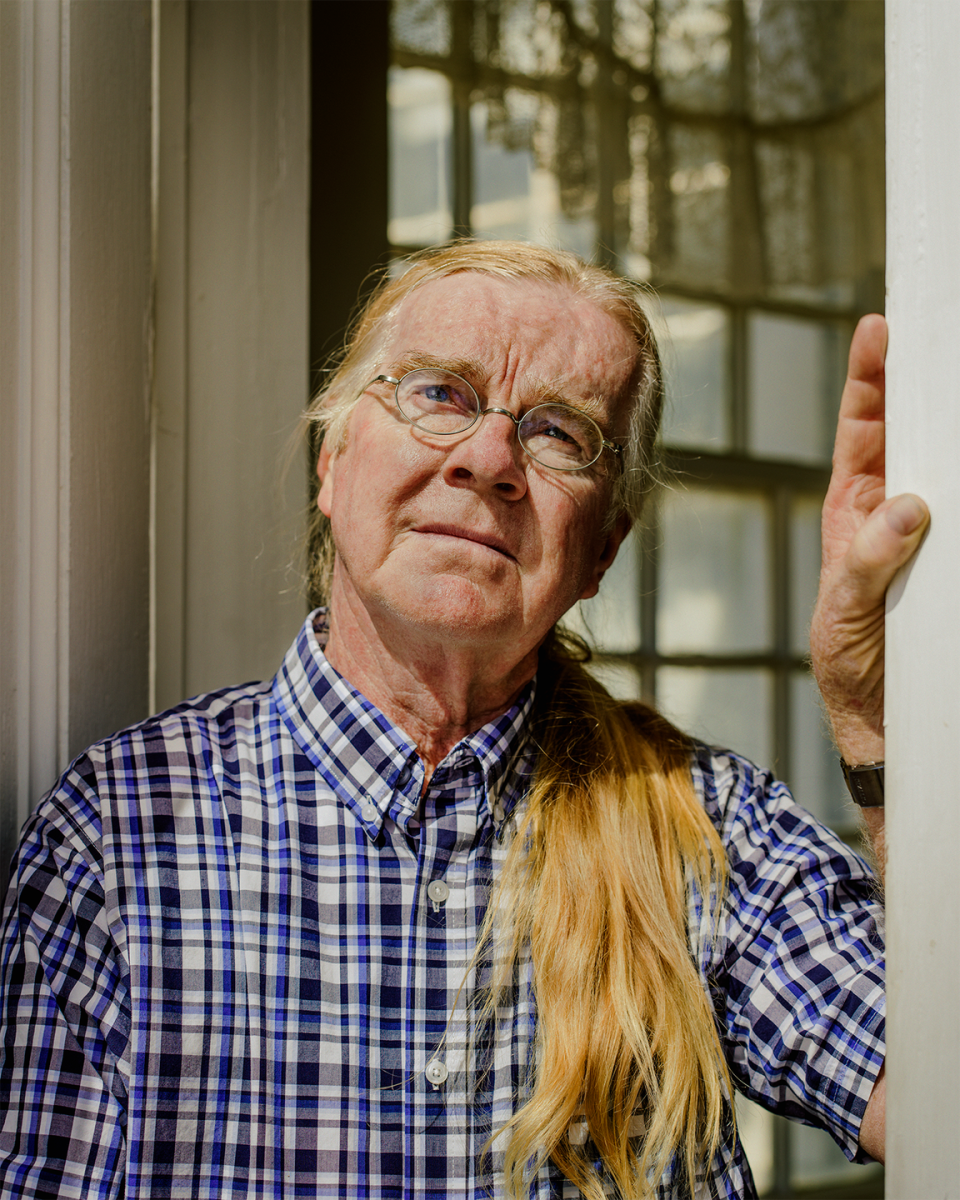
So people are doing what they do: They’ve sought out one another online, building communities on Facebook where they vent about the lack of clean drinking water around Paradise and drawn-out fights with insurance companies. They announce apartment rentals and pets in need of homes, free financial-planning seminars and job openings. Residents-turned-refugees send notes of encouragement and commiserate over the pain of being away from friends and needing to send kids to new schools, each exchanging a little thread that helps knit the community back together. And they cheer others’ victories, especially one woman’s pictures of her newly issued building permits. Especially that one.
A couple dozen times a week, Cindy Goodwin’s phone rings with people asking what’s for dinner. Maybe it’s fried chicken, mashed potatoes, and green beans. Or sandwiches and brownies. Or breakfast for dinner. “That’s the biggest hit,” says Goodwin, who helps organize disaster-relief projects for Paradise Alliance Church. This past spring, the church started weekly community dinners for those still living in town so that they could have some conversation and connection.
As one of the few large buildings that didn’t burn down, the church has become a de facto community hall, holding townwide meetings about the cleanup and recovery. On weekday mornings, there’s a café with free coffee, pastries, and WiFi for residents. The dinners now draw more than 400 people, including survivors who drive up to reunite with friends and neighbors. “After dinner is over, there’s maybe 50 people still there talking, having coffee, loving on each other,” Goodwin says. “We all are in the same boat. We have to learn together; we have to face tomorrow together.”
In Paradise, and in other towns to which people dispersed, new friendships have formed around the bond of surviving. Some host social clubs and Bible studies in their homes. Others check in on lonely neighbors. “Get involved and be part of the solution,” says Lindstrom. “If people come in and volunteer, their spirits go up. They’re helping people in need. They’re seeing that others are going through the same thing. They’re out of the ‘poor me’ situation.”
Dr. Meekins and his colleagues tell their patients much the same. New routines, social support, and healthy lifestyles can help people feel less overwhelmed and isolated. “The ones who deal better,” he says, “they’re focusing on what’s in front of them and having a sense of accomplishment, breaking things down into what needs to be done in the short term, balancing that with their mental-health and emotional needs. They are still needing help and getting overwhelmed at times, but they seem better equipped to deal with the setbacks.”

THE SEARCH FOR a new normal started soon after the fire, as survivors tried to remind themselves of what the town was and could be again and as local leaders assured residents that they would rebuild. They held several meetings to solicit input. Maybe bike lanes along the streets. And a stylish downtown to replace what had been a hodgepodge of buildings. The new Paradise will be smaller and more modern, with more fire-resistant materials, quicker evacuation routes, and more reliable emergency notifications. But Mayor Jody Jones says a key to rebuilding will be preserving the intangibles, like the town’s spirit. “You know everyone in town. People are very close-knit,” she says.
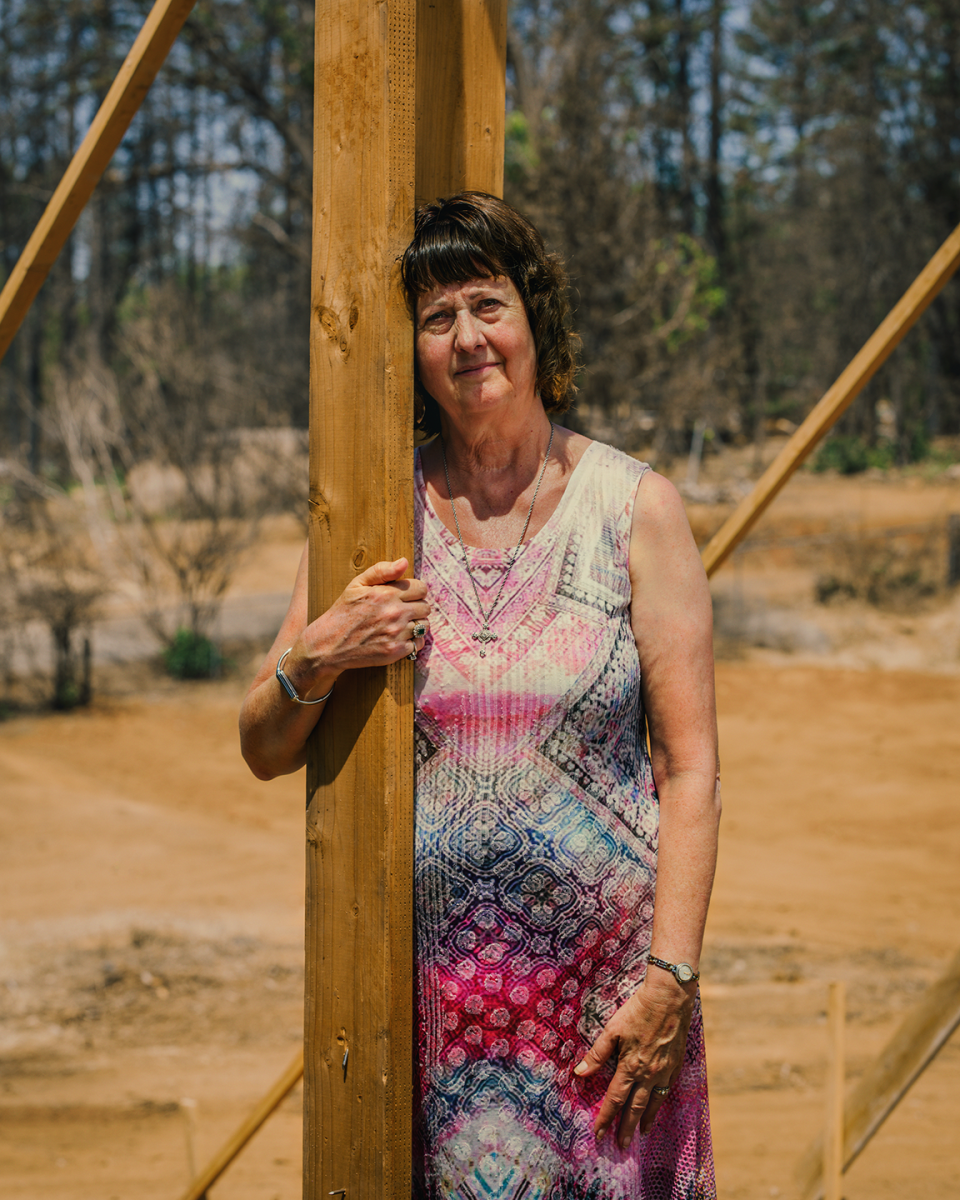
The thousands of people waiting to see how the recovery progresses are Jones’s target audience: She needs the residents to come back. The town lost 90 percent of its tax base, she says, and though more than 200 businesses have reopened—from grocery stores and restaurants to a travel agency and a bicycle shop—some won’t have enough customers to survive.
By late summer, work crews had scraped clean nearly 10,000 lots and cut down more than 100,000 scorched pine and oak trees, which removed many of the worst reminders of the fire. The town had issued about 150 building permits and two occupancy certificates for newly built homes. It’s opening a Building Resource Center, meant to be a one-stop shop to guide residents through the rebuilding. Nearby Butte College is offering free tuition for fire survivors to earn construction degrees.
With the cleanup phase nearly finished, rebuilding will ramp up fast. But replacing what was lost—within the town and within its residents’ lives—will take years. Town leaders can only do so much. The rest involves waiting.
And there’s a lot of waiting around Paradise these days. Waiting for lots to be cleared and the rebuilding to start. Waiting for insurance checks to arrive, and then for the money to run out. Waiting for the nxiety to fade, the grief to soften, and the days to get a little easier.
At the health clinic, Dr. Meekins has started to see a shift, with people talking less about the fire and more about other concerns. “Everything is influenced by the fire, and I imagine it will be for some time,” he says. Yet he’s seeing something else, too. “There’s an impressive amount of optimism. They’re finding positives in their days and their outlook.”
This is how the town will come back. In the fight and the drive to push on. In the hands of people like James Hurt.
I spot him at sunset one evening on a scorched lot on the east edge of town, raking a pile of twigs amid a patchwork of emptiness. He is 67, with thick arms and a gray beard, and he always has a project, most often involving hard labor.
Sometimes his wife, Linda, says it looks like he’s just moving dirt back and forth. Maybe, he tells her. But it gives him a sense of forward momentum. Eight months after the fire, his neighbor was still living in a hotel room, with nothing to do but argue with his insurance company. That would have driven Hurt crazy. “I’ve gotta keep moving,” he says. “It keeps me from getting depressed about it all.”
He surveys his land, remembering what was. The house they’d just remodeled. Their tall, gorgeous trees. The garage with all his welders and woodworking tools. And the 1956 Chevy Nomad station wagon that he restored himself, in too many hours to count. It was a beauty, sea-foam green and pearl white with a hot-rod engine. It’s still there, a rusty, empty shell. “To see it melted to the ground was just devastating,” he says.
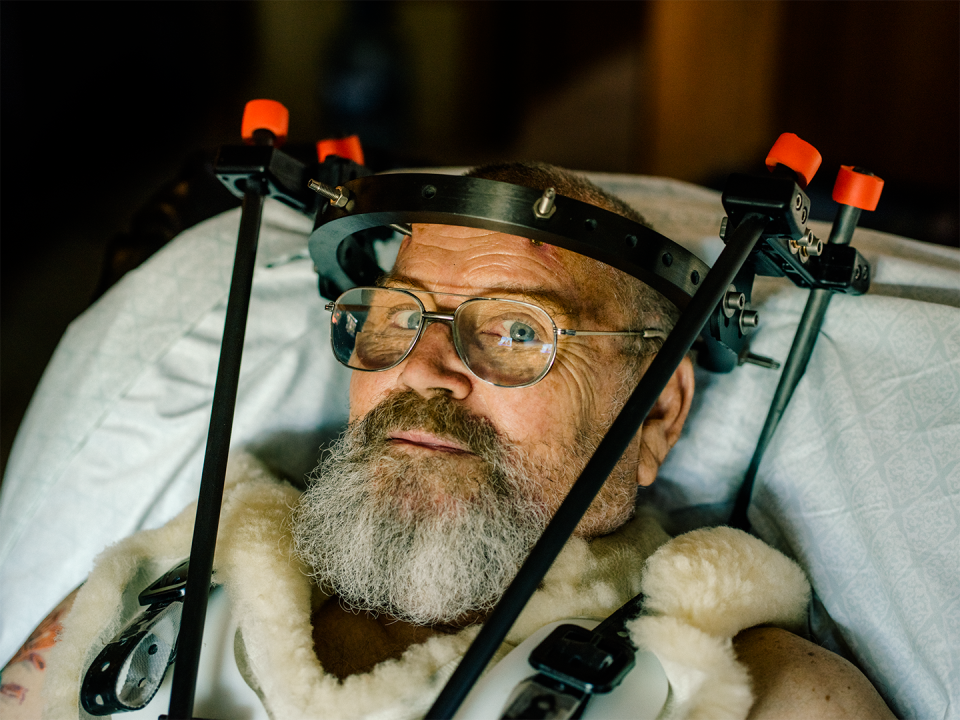
He and Linda had been out of town visiting a granddaughter. If they’d been home during the fire, they could have saved a few things, at least their photos and important papers. But Hurt figures he might have been found dead, with a water hose in his hand.
They lost everything but the RV, which somehow survived untouched. Hurt connected it to the water line and septic system. No one gave him permission, and he didn’t bother asking. He would have fit right in with the gold miners who worked the canyons here in the 1800s. He bought a new orange tractor with a front bucket and a backhoe to replace the tractor that burned up, and, a trailer at a time, he loaded up their charred life and hauled it to the dump.
The town told him he didn’t go through the right channels, that he should have used an approved debris-removal contractor. But he didn’t see the sense in that when he could do it himself. Now he just needed the town to give him a building permit.
By midsummer, with the temperature nearing 100, he and Linda sweated it out in their RV. They still didn’t have a power pole, so for air-conditioning they ran a generator day and night. A sprawling oak tree at the back of their property offered some shade, but he needed to trim some of its limbs to make room for the RV. He climbed into the raised front bucket of his tractor and got to work with an electric polesaw, until a fat limb swung down and smacked his hip. He flipped backward out of the bucket and landed facedown on the tractor.
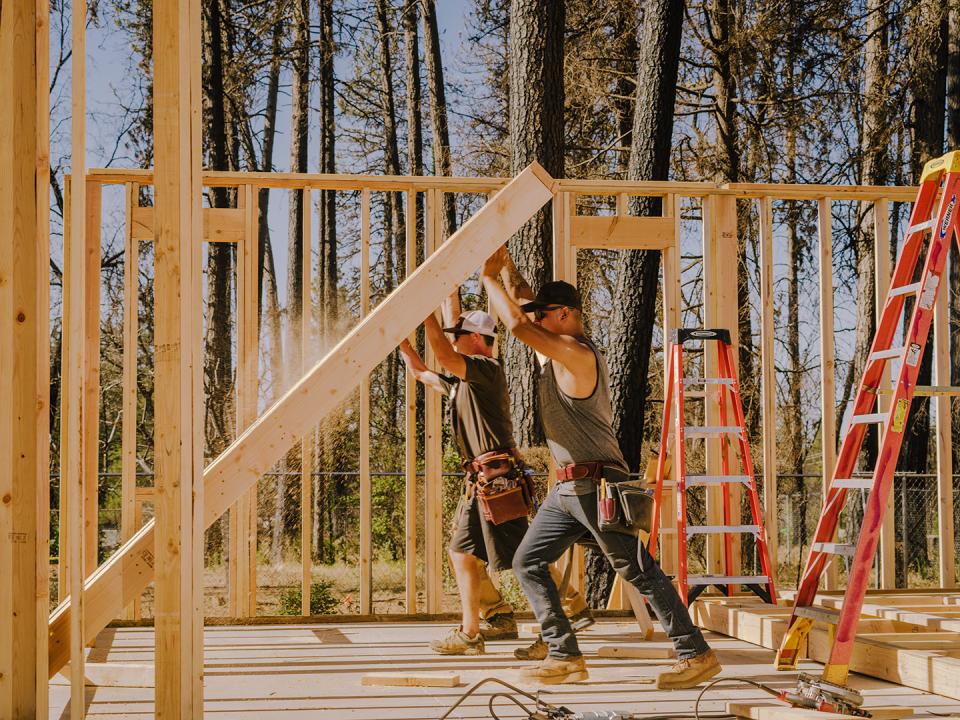
“I’m fine,” he told Linda. But the next morning, he could barely move his head. Before the fire, he could have walked across the street to the hospital, which is now closed. Of course, before the fire he might not have been perched in a tractor bucket trimming limbs. An ambulance took him to the hospital in Chico, where a doctor told him he was damn lucky he wasn’t paralyzed: He’d broken his neck.
He was sent home with a halo bolted to his skull to keep his neck immobilized for a couple months. Which meant no working outside. Which made him antsy. He’d be out there with a chain saw if he could. So he looks out the RV window and makes plans, for the new house and the new garage, for the day when he’ll have neighbors again, when the town will rise around him.
“Too bad we had to go through this crap,” he says, “but that’s what happens.”
That’s what happens. That’s what will happen. In the next Paradise ravaged by fire or flood. In the next lives upended by personal calamity or townwide crisis.
How will they recover?
James Hurt has some advice for them.
“You just keep going,” he says. “What else can you do?”
You Might Also Like

